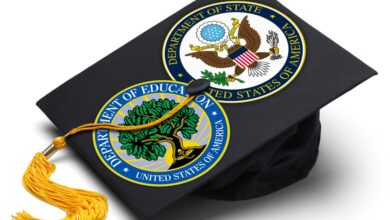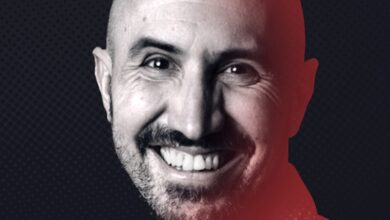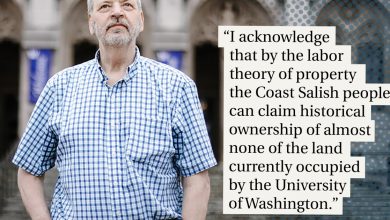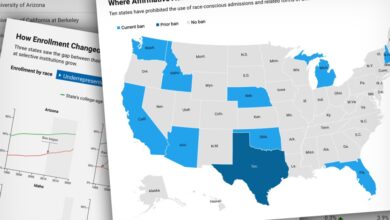What the Fight Between a Horse and a Cow Reveals About How Students See Their University
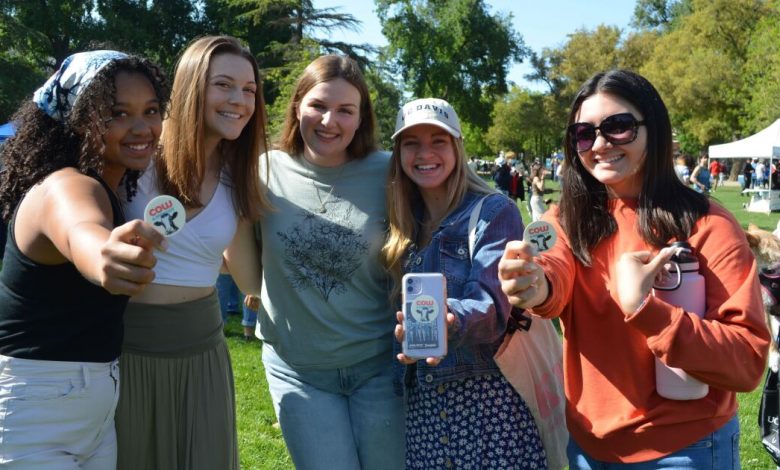
It all started when Mick Hashimoto arrived at the University of California at Davis for freshman orientation and smelled cows.
Hailing from a bustling city just outside of Denver, Hashimoto remembers being immediately struck by the strong stench rolling in from the UC-Davis Dairy, an on-campus animal facility that houses around 300 cows.
But as the year went on, what started as a somewhat undesirable campus quirk shifted to a point of pride for Hashimoto. The connection between the cows and the university’s agricultural roots resonated with him.
“I decided, OK, well, it’s part of it,” Hashimoto said. “I think coming into orientation, or just coming into the first week of school, you’re really next to the cow and you’re like, ‘Wow, this is the No. 1 agricultural school.’ It makes me proud in the sense that this is what UC-Davis is known for, and it’s great to be No. 1 in something.”
That’s why Hashimoto, now a junior double-majoring in economics and statistics, started a movement — or MOOvement, as he likes to say — to change the university’s mascot, from Gunrock the Mustang to Aggie the Cow. He wants the campus community to be proud of UC-Davis and its agricultural origins, and he wants to galvanize school spirit.
UC-Davis’s student government held a referendum this month on the possibility of changing the mascot. Just 12 percent of the student body voted, but the outcome was decisive: More than 70 percent of those who voted were pro-cow.
Any official change would have to be approved by the university’s administration, the athletics department, and the Cal Aggie Alumni Association. That’s probably an uphill battle, given the financial costs of changing a logo and alumni affinity for the horse.
“We do love our cows on campus, but Gunrock the Mustang remains the UC-Davis mascot,” a university spokesperson wrote in an email. “Any change would have to go through a process and then be approved by the alumni association and administration.”
Still, the widespread support for the Cow4Mascot campaign — pitting the horse, which some students see as elitist, against the cow, which they see as more representative of today’s diverse student body — is a telling demonstration of how students feel about institutional identity. It’s even reminiscent of the longstanding struggle in higher ed between prestige and mission.
Reclaiming ‘Cow Town’
Turn to the internet, and the words “UC-Davis” and “cows” often appear together. There’s a wiki page dedicated to their presence on campus. On the UC-Davis Dairy’s Instagram account, students in graduation regalia snap selfies with bemused cows. The facility’s proximity to a popular student dorm appears to have been the inspiration for a number of wryly written op-eds.
But Hashimoto said the association with the cow has been used to disparage the university for years. He’s often heard people refer to UC-Davis as a “cow town.” During the college-application process, he recalled hearing the stereotype of how nobody wanted to go there.
“There’s a lot of negative connotations with UC-Davis as a cow image,” he said. “I think that’s something we want to take back and put in our control. That way, we see it in a positive light.”
Those involved in the Cow4Mascot campaign said there is plenty for the campus community to be proud of. For the past decade, UC-Davis’s agriculture and forestry programs have been second best in the World University Rankings by subject. Its veterinary school has held either the No. 1 or No. 2 slot every year since 2015.
Brittany Tang, a junior majoring in political science and public service and a campaign leader, said the Cow4Mascot effort had united many different kinds of students and bolstered campus pride in the wake of the Covid-19 pandemic.
“Coming from the city, metropolitan area, I definitely had my own qualms coming to rural Davis,” said Tang, who is from Southern California. “The way that I looked at it was we should use this as an opportunity to make it our own in terms of Aggie pride, really take ownership of that, and redefine what that meant to us.”
While a cow isn’t as fearsome as some college mascots, like the popular tiger or wildcat, Hashimoto said there’s a precedent for this kind of change. The banana slug, often found on the redwood-forest floor, became the official mascot of the University of California at Santa Cruz in 1986 after students used a straw poll to persuade the administration to embrace the slimy, bright-yellow mollusk. A tree has been acknowledged as Stanford University’s unofficial mascot for the last couple of decades.
“The initial idea of a mascot was to have it be athletic and fierce and intimidating,” Hashimoto said, “whereas now it’s become more about the student identity and what the school’s identity is.”
Changing a Mascot
Campaign members argue that beyond serving as a better symbol for agriculture, a hardworking cow is more representative of today’s diverse student body than is an elite racehorse.
Gunrock, the current mascot, was named for a Thoroughbred racehorse born in Britain over 100 years ago. Gunrock was donated to the Cavalry Remount Service and placed at the college, and eventually was bred with 476 mares “with the aim of improving horse stocks” for both civilian and military use, according to the university. Students voted for the name and mustang mascot in the 1920s, and again in the early 2000s. In 2003 the furry, blue Gunrock mascot of today officially arrived on campus.
“It’s always been something that students have chosen for themselves, but as the years have passed, I think just sort of fell out of touch with that,” Tang said. Students actually voted for a cow mascot in 1993, but the proposal was rejected by the university’s administration.
Alumni opinion, she and Hashimoto said, is one of the biggest hurdles this time around. Since students voted to support their proposal, the Cow4Mascot campaign’s leaders have started conversations with alumni — and have been surprised by how deeply some feel about the current mascot.
While acknowledging that there are emotions and well-intentioned ideas all around, Debby Stegura, a former president of the Cal Aggie Alumni Association, said she favors keeping Gunrock because of its tradition. She also believes that a horse is just as reflective as a cow of UC-Davis’s identity.
A cow, she said, is often associated with the institution, but the same could be said of the wild turkeys that roam the town or the sheep that graze in nearby grasslands.
“I think it does represent where we’re going,” Stegura said of the horse, clarifying that this was her opinion and not that of the alumni association. “The analogy I made is, the Thoroughbred is how fast this university is rising.”
Changing the university’s marketing program, uniforms, logos, and everything else associated with the Gunrock image to accommodate a new mascot would also be an “enormous financial burden,” she said.
One possibility that has arisen from talks so far, Hashimoto and Tang said, is that the cow could be a second mascot, with Gunrock still leading the charge in terms of uniforms, apparel, and marketing. The only cost would be for a second mascot costume. Then, some years from now, when current students move into those alumni and donor roles, their thinking goes, the cow could take center stage.
The University Farm
Frank Mitloehner, a professor and air-quality specialist in the university’s animal-science department, said he was surprised to learn the students’ proposal had gained so much support. But Mitloehner feels that embracing the cow would make sense from a historical perspective. And students’ enthusiasm for the change, he said, might say something about their values.
UC-Davis opened its doors in 1908 as a farm for the University of California at Berkeley. About 30 years later it was renamed the College of Agriculture at Davis, and in 1959 it was officially designated as its own campus in the UC system. While the university now offers many majors beyond agriculture, Mitloehner said, the animal-science major is still one of the largest programs.
Most of Mitloehner’s students come from big cities. These students, he said, don’t have a connection to agriculture, but they do have an interest in food. They are grappling with key societal questions: Where does food come from? How is it grown? What is its environmental impact? What about animal welfare?
“All these issues are so in the minds of these 20-year-olds,” Mitloehner said. “That’s one of the reasons they come to this campus.”
Students, he said, are having to think hard about how to feed a rapidly growing global population in a sustainable way that doesn’t destroy the planet. UC-Davis, he said, is often regarded as at the forefront of those issues and as “the nexus between agriculture productivity and sustainability.”
“We are neither the one or the other, we are something that bridges these two areas,” Mitloehner said. “I’m very comfortable with that. I think that’s the place where I want to be, and that’s the place where many of our students want to be. This discussion about the mascot plays into that.”


